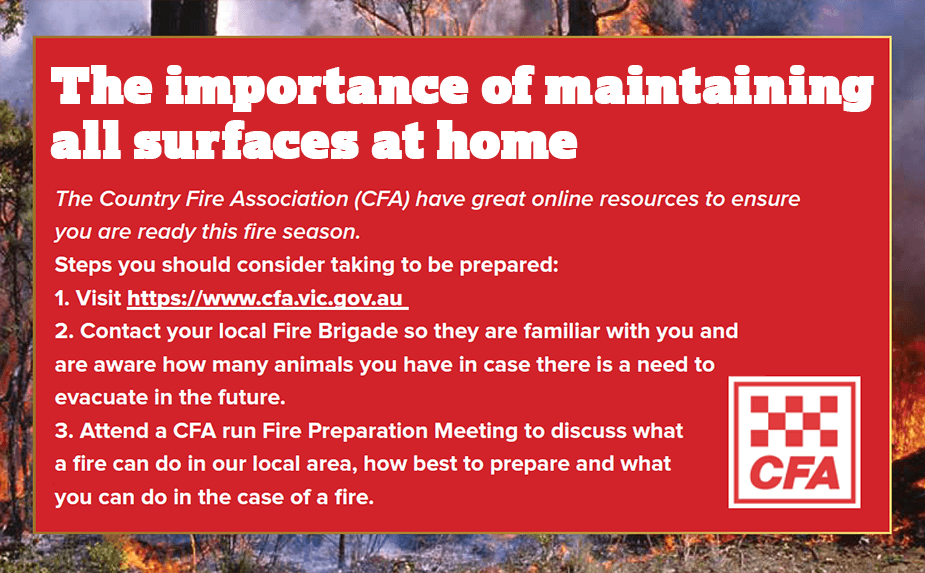
There are a range of adverse weather conditions that can impact on a greyhound’s health and wellbeing. In most cases we think of hot weather over summer that can lead to heat stress or even heat stroke. However, cold weather during the winter months also requires attention to prevent a loss of condition and poor health. Other weather events can also impact on greyhounds at any time of the year. Fire, storms and floods are all events that can happen quickly and it is important to have a plan to respond to these.
On this page you will find:
Managing greyhounds and fire
Hot, dry summers are common in Victoria and it is important to always get your fire plan ready in plenty of time. Spring is a good time to start. Avoid leaving things until the last minute. Start getting your property ready:
-
- Prepare or review your fire plan, including evacuation options; if you choose to take your greyhounds with you, contact your local Municipal Council to find out which of their evacuation centres will allow animals and add the address and details to your plan
- Remove doormats from around the house and kennel areas
- Move combustible outdoor furniture and other items from decks, up against, or under the home or your kennel area
- Move pot plants a few metres from the home or kennel area
- Double check that gas bottles are anchored securely with the relief valves pointing away from any flammable materials
- Mow your lawns or slash long grass in surrounding paddocks, yards, alongside slipping tracks etc
- On bigger properties, a clearing of about 10 metres of well-mown grass around your home and kennel block is advisable
- Walk around your home and remove piles of fine fuels such as leaves. It will probably be where embers will land
- Check your gutters to make sure leaves haven’t built up – check your home, kennels and other shedding
- Make sure you remove any fuels from around windows and doors. These are the most vulnerable parts of the home and kennel area
- Make sure trees on your property are healthy with no dead limbs and no vegetation underneath them
- Ensure your insurance is sufficient and current
- Prepare a greyhound evacuation kit, including, leads, muzzles, bedding, first aid kit, food and water bowls, 3 days of dry food and bottles of water. Make sure you include any medication your greyhound may need. Have your kit in a central location so it can be quickly loaded into your car
- If you have transport crates, ensure they are clean, in good working order and easy to access
- Practice your emergency evacuation plan at least once before the hot, dry weather arrives.
Note: The Code of Practice for the Keeping of Racing Greyhounds requires every establishment to have emergency evacuation plans in place along with points of evacuation drawings (refer to your EHMP).
The Department of Agriculture has some excellent resources and advice on preparing your property and how to manage pets, horses and livestock during fires.


